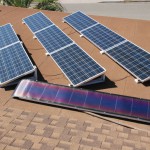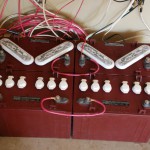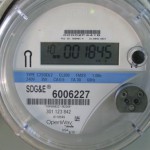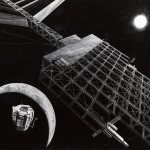 I have made repeated references in past posts to the modest off-grid photovoltaic (PV) system I built to cover a large share of our—again modest—electricity usage. By popular demand, I’ll take you on a tour of the system: it’s history, its composition, and adaptation to my house.
I have made repeated references in past posts to the modest off-grid photovoltaic (PV) system I built to cover a large share of our—again modest—electricity usage. By popular demand, I’ll take you on a tour of the system: it’s history, its composition, and adaptation to my house.
In 2007, I acquired a single, second-hand solar panel—intent on doing something useful with it. Confronted with a variety of options, and eager to explore multiple paths, I purchased a second panel and proceeded to set up a dual system: two stand-alone off-grid PV systems mounted side by side. It was really cool. I was able to power my television console and living room lights off of the two systems, while experimenting with different components and learning to live (part of) my life on natural power. I wrote a comprehensive article about how to size and design such a system, which may be worth reading first. Since that initial success, I have incrementally expanded my system so that I now get more than half of my electrical power from eight panels sitting in the sun. This is their story.
I have enough to say about my solar setup (and PV systems in general) that I must break this topic into multiple posts. In this, the first, I will describe the components, functions, and evolution of the system. In a future post, I will present system performance data and an assessment of efficiency of the various components. Perhaps even later I can explore the impacts of panel orientation, tracking, horizon obstructions, and geographic location.
Continue reading →
Hits: 2391
 A colleague pointed me toward an article in the LA Times last week, which lays out a plan to remove financial incentives legally bestowed on solar photovoltaics (PV) to the detriment of utility power companies. The plan is spearheaded by the Koch brothers and their political action group, Americans for Prosperity.
A colleague pointed me toward an article in the LA Times last week, which lays out a plan to remove financial incentives legally bestowed on solar photovoltaics (PV) to the detriment of utility power companies. The plan is spearheaded by the Koch brothers and their political action group, Americans for Prosperity.








